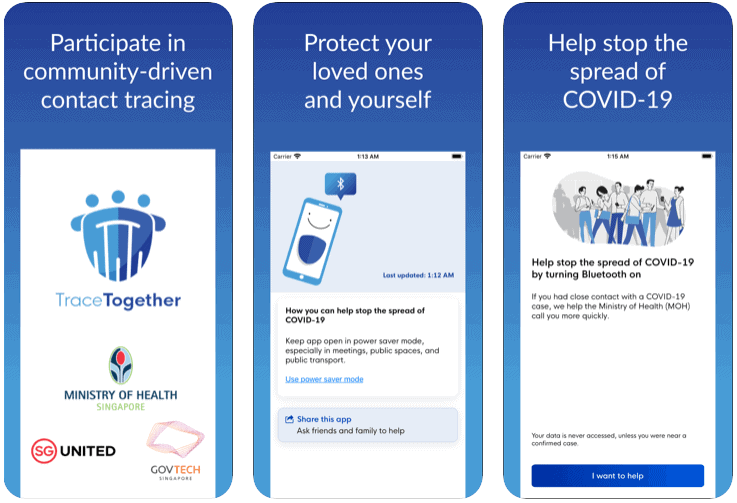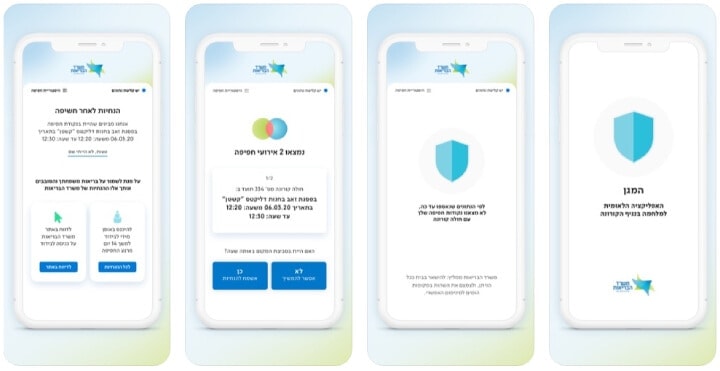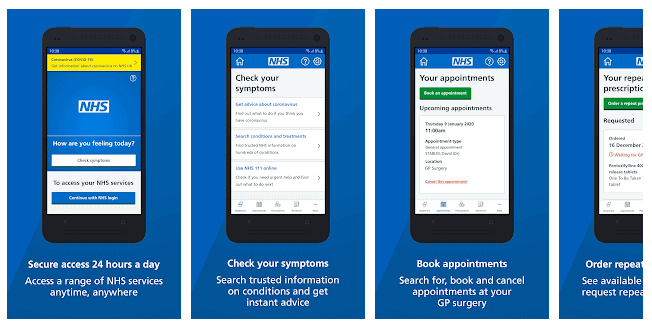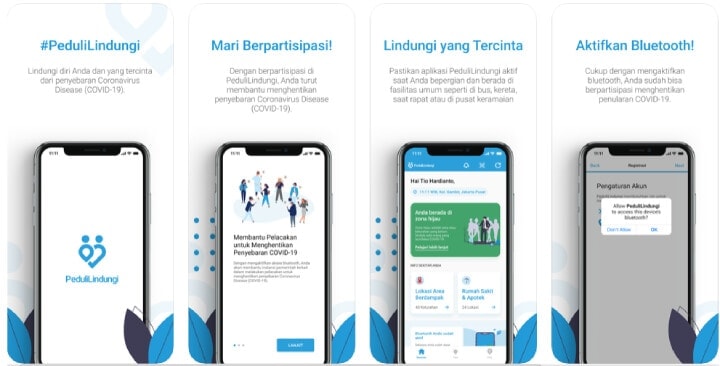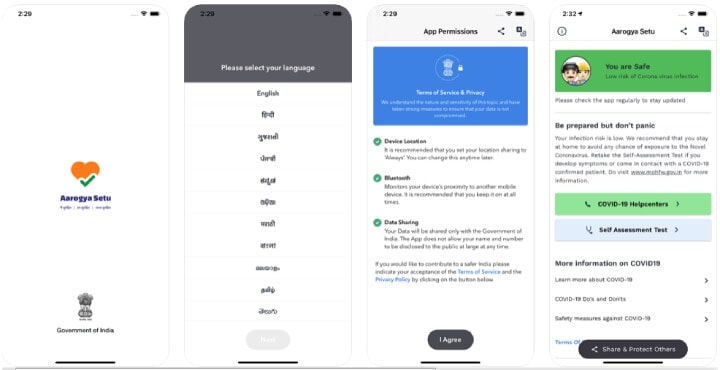
How hospitals are using AI and mobile apps to battle COVID-19?
Manual screening and contact tracing apps help in detecting COVID-19 symptoms in users. Tracing apps work by identifying the users’ location by using contact tracing technology and cross-checking if the user comes in close contact with a Corona positive patient, but they have limitations.
Beyond manual screening, AI-driven technology is increasingly being used for COVID-19 symptom detection, provide decision support for medical imaging or CT scans, and automate medical operations.
Healthcare uses AI in the fight against COVID- 19
No-contact infrared sensor system The system is equipped with a no-contact infrared sensor system to detect potentially contagious people. It picks up positively contagious individuals. The technology-backed system singles out the person who is suffering from fever, even in the crowd.
AI System
Florida’s Tempa General Hospital deployed an AI System at its entrances to detect individuals having COVID-19 symptoms. The hospital entrances are equipped with cameras that identify people with COVID-19 symptoms to refrain such persons from visiting patients. These AI-driven systems replace manual screening processes while providing more safety to healthcare professionals and patients.
AI-driven CT-Scan Interpreter
Hospitals are using an AI-driven CT-Scan Interpreter that helps to identify COVID-19 symptoms when radiologists are not available at the hospital. The AI-backed software detects visual signs of pneumonia associated with coronavirus on the CT scan images. It helps to diagnose, identify, isolate, and treat the patients quickly.
Hospitals Staffed by Robots and IoT devices
Robots are assisting patients, thus limiting contact with caregivers and reducing the spread of Coronavirus to caregivers. The smart field hospital is staffed mostly by robots and IoT devices, where the humanoids are helping clean and disinfect the surface and patients, taking the temperature of patients and delivering medicine and food to COVID positive patients.
Benefits of AI in the fight against the outbreak
AI-Driven Scanners
AI-driven scanners help to detect the possible Coronavirus pneumonia symptoms in the images of CT scans in just 10 seconds, while the manual processing takes up to 15 minutes. It helps to initiate quarantine actions quickly to prevent cross-infection.
Diagnosing and monitoring
AI systems are integrated at hospitals to assist doctors in making accurate decisions quickly by automatically measuring and comparing the changes in the lung lesion from the images of CT scans.
The testing process
Manual screening can take up to a week to receive the confirmation of COVID infection. AI+CT acts quickly and can help doctors to make prompt decisions.
How are COVID symptoms tracking apps helpful?
CovidWatch
CovidWatch app, developed by the US, uses Bluetooth technology to identify when users are near each other and notify them if they were in contact with someone who later confirmed to have Coronavirus. It empowers persons to protect themselves and their communities without compromising their privacy.
It uses Bluetooth to detect users when they are in proximity to the affected person and alerts them anonymously if they come across anyone who has tested positive. A distinctive feature of the app is that nobody, including the government, can track who was exposed by whom. It is released as an open-source protocol for privacy-preserving, decentralized Bluetooth contact tracing.
Link: (Web)
TraceTogether
TraceTogether uses Bluetooth signals to identify if you are close to another user using the app. The proximity data is encrypted and stored on the user’s device only, the app mitigates the spread of Coronavirus through a community-driven tracing system. TraceTogether is a popular Singapore smartphone app and uses Bluetooth to track infected people and notify those who were in close proximity to COVID positive person during the last 15 days.
The app doesn’t collect data and when people come close to each other, both phones will use Bluetooth to exchange a Temporary ID using encryption and generate User ID with a private key. Data can only be decrypted by MOH, and does not reveal your identity or the other person’s identity and has become a prototype for many other contact tracing apps in other parts of the world.
Link: (Web, iOS, Android)
HaMagen
HaMagen is endorsed in Israel by the Ministry of Health to prevent the spread of the pandemic. The app alert user if they are known to come in close contact with anyone who later detects for having COVID positive symptoms. The app allows users to find if in the past 15 days they were in close contact with anybody who is diagnosed with the virus.
Once a user installs the app, the affected person’s movements are tracked using location technology. In case a particular user is in proximity to an infected person, the app redirects the person to the health ministry website to register for self-quarantine.
Link: (Web, iOS, Android)
NHS App
NHS Smartphone app, along with other COVID tracing apps, uses contact-tracing technology to detect and alert people who have come into contact with a person infected with coronavirus in the last few days. NHS (National Health Service) App is being designed at NHSX, the innovation unit of NHS.
The app keeps a tab on people’s movements and notify those who come in contact with those who have been infected. App analyses the patterns of the virus spread and hotspot and helps in categorizing hot spots based on demography, household structures, and mobility patterns.
Link: (Web, Android)
PeduliLindungi
PeduliLindungi is developed by the Indonesian Govt and enables users to compile data related to the spread of COVID-19 in their communities, helping the government track confirmed cases and those suspected to be infected with the virus.
Link: (Web, iOS, Android)
Kwarantana Dommowa
Poland is one of the first few countries to roll out the app that collects personal information, including people’s location and digital photos to combat the pandemic. It is made compulsory for COVID positive persons to upload their selfies so that their exact location can be pinpointed.
Link: (Web, Android)
Corona DataSpende
Corona DataSpende, a German smartwatch app monitors the spread of coronavirus by collecting vital signs like pulse rate, body temperature, sleep patterns. The data is collected at the backend and then portrayed on an online interactive map that helps health authorities to take stock of the situation and find out the hotspots.
Aarogya Setu
The app helps to identify people who have come near Corona positive person. It is a multi-lingual app and is available for iOS and Android users on Apple App Store and Google Play. Aarogya Setu, developed by Indian Govt, is the most downloaded app in the world to track Covid-19.
The app notifies users if they have come in contact with corona positive person. Application tracks the user via Bluetooth and a location-generated graph that charts proximity with anyone infected. It is a multi-lingual app, availaible in 11 languages, and also provides self-quarantine instructions.
Link: (Web, iOS, Android)
Role of TechAhead in building AI-driven healthcare apps
The healthcare sector and medical service providers urgently need to implement decision-making technologies that can help handle the virus by quickly identifying the possible COVID symptoms and create innovative healthcare solutions beyond detection. TechAhead has vast technical and design expertise in healthcare app development for its clients.
We have experience in creating mobile healthcare apps for patient engagement, scheduling appointments, online diagnostic, prescription management, healthcare monitoring, patient progress, and recovery, bills management, lifestyle tracking, healthcare app using Artificial Intelligence development. We understand the value of each app we develop and work diligently to make it a success. Get in touch with us and we will provide you with an incredible healthcare app development experience.
Final Words
AI-driven COVID tracking apps are not built to replace medical and healthcare services; these apps are more focused on detecting COVID symptoms through community-based contact tracing. These apps contribute to preventing the spread of Coronavirus to a significant extent.



